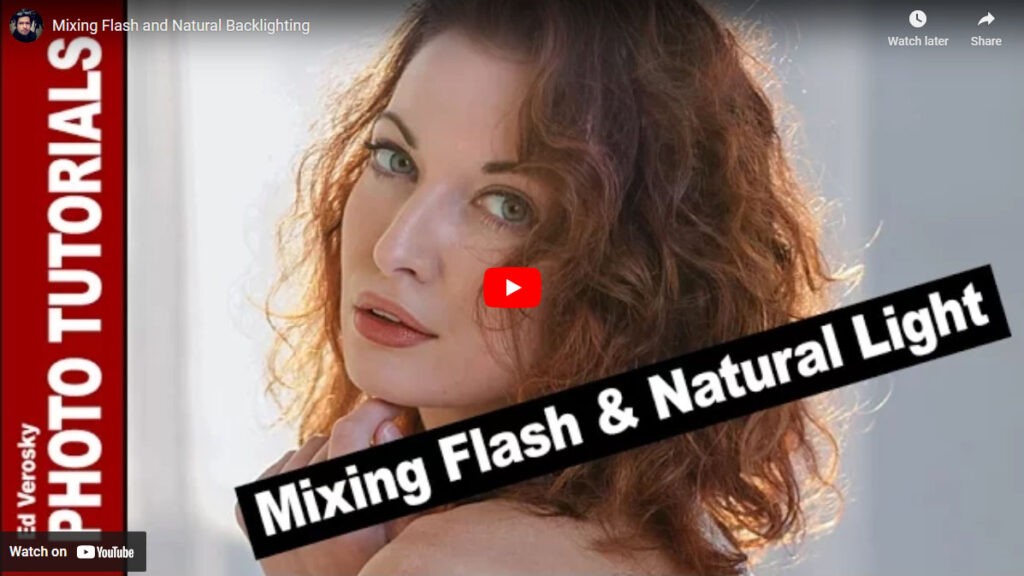One of my favorite lighting techniques involves mixing flash with natural light, particularly when the natural light is strong and coming from behind the subject. This method creates a beautiful backlighting effect that adds dimension to your photos.
The Basics
Using natural backlighting alone can work if there’s enough illumination bouncing around to reach the front, camera-side of your subject. However, in many indoor situations, this isn’t always the case; you’ll need to add some additional light to your subject. Balancing the ambient background light with flash illumination for your subject is what this post is about.
The Technique
To balance the lighting, I use a studio strobe or flash to maintain control over the subject’s lighting while maintaining my desired exposure for the ambient background light. Here’s a step-by-step guide to achieve this effect:
- Set Your Camera to Manual Mode: Start by taking a few test shots with only the natural light. Focus on how bright the background is, not how dark the subject appears.
- Adjust Settings for Natural Light: Use a low ISO setting and keep your shutter speed at or under the camera’s flash sync speed. Adjust the aperture to get the desired background exposure.
- Add Flash: Once the background exposure is set, leave your camera settings alone and set up your flash to illuminate the subject. Adjust the flash intensity until you’re in the ballpark for your desired exposure for the subject.
- Test and Adjust: Take test shots and fine-tune the lighting as needed. The goal is to have a well-exposed subject with a balanced background.
I encourage you to watch my video on this topic. Although it’s from a decade ago, the techniques are timeless and still very relevant.
Loved this tip? Here's something else you might like:
👉 Free 10-Min. Guide to Off-Camera Flash


